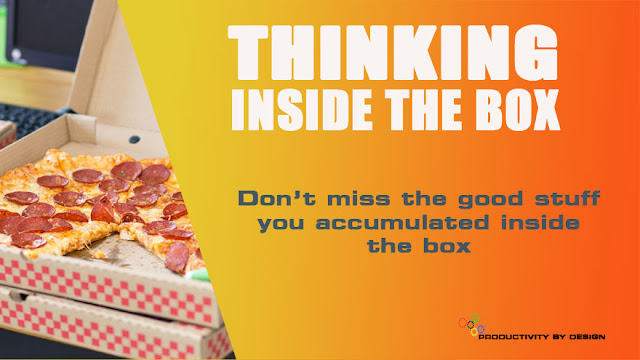In an era where "thinking outside the box" is often celebrated as the key to innovation, it's easy to overlook the power of traditional thinking.
While groundbreaking ideas are undoubtedly valuable, sometimes the best solutions lie within the confines of existing frameworks.
- The Forgotten Art of Inside-the-Box Thinking
- Unleashing Innovation Within the Box
- The Balance Between Innovation and Stability
The Forgotten Art of Inside-the-Box Thinking
For years, the mantra of innovation has been to break free from conventional thinking.
However, this emphasis on radical ideas has often overshadowed the potential of incremental improvements.
By revisiting tried-and-true methods and optimizing existing processes, businesses can achieve significant gains in efficiency, productivity, and customer satisfaction.
Unleashing Innovation Within the Box
Identify Core Strengths
Pinpoint the unique strengths and capabilities of your organization.
- Core Competencies: What does your organization do exceptionally well?
- Unique Selling Proposition (USP): What sets your organization apart from competitors?
- Customer Value Proposition (CVP): What value do you deliver to your customers?
Optimize Existing Processes
Streamline workflows, eliminate redundancies, and improve efficiency.
- Process Mapping: Visualize your processes to identify bottlenecks and inefficiencies.
- Lean Principles: Apply Lean methodologies to reduce waste and improve flow.
- Automation: Utilize technology to automate repetitive tasks and free up resources.
Leverage Data and Analytics
Use data-driven insights to inform decision-making and identify areas for improvement.
- Data Collection: Gather relevant data from various sources, such as customer feedback, sales data, and operational metrics.
- Data Analysis: Use data analysis tools to uncover trends, patterns, and correlations.
- Data-Driven Decision Making: Make informed decisions based on data-driven insights.
Experiment with Small Changes
Test new ideas on a small scale to minimize risk and maximize impact.
- A/B Testing: Compare two versions of a product, service, or process to determine which performs better.
- Pilot Programs: Implement new initiatives on a limited scale to assess their effectiveness.
- Iterative Approach: Continuously refine and improve your approach based on feedback and results.
Encourage a Culture of Continuous Improvement
Foster a mindset that values learning, adaptation, and innovation.
- Employee Empowerment: Empower employees to identify and implement improvements.
- Recognition and Rewards: Recognize and reward employees for their contributions to innovation.
- Learning and Development: Invest in training and development to equip employees with the skills they need to innovate.
The Balance Between Innovation and Stability
While it's important to embrace new ideas, it's equally crucial to maintain stability and continuity.
By striking a balance between innovation and tradition, businesses can achieve sustainable growth and long-term success.
Key Takeaways:
- Innovation isn't always radical: Sometimes, the most impactful innovations come from small, incremental changes.
- Embrace the power of the status quo: Build on your existing strengths and leverage proven strategies.
- Data-driven decision-making: Use data to identify opportunities for improvement and measure the impact of your initiatives.
- Foster a culture of innovation: Encourage employees to share ideas and experiment with new approaches.
- Balance risk and reward: Carefully weigh the potential benefits and drawbacks of innovative ideas.
Additional Considerations:
- Customer-Centric Innovation: Focus on creating solutions that meet the needs and desires of your customers.
- Collaboration and Teamwork: Encourage cross-functional collaboration to generate new ideas and solve problems.
- Agile Methodology: Adopt agile principles to respond quickly to changing market conditions and customer needs.
- Fail Fast, Learn Fast: Embrace a culture of experimentation and learning from failures.
- Long-Term Vision: Develop a long-term vision for your organization and align your innovation efforts with that vision.
By recognizing the value of both inside-the-box and outside-the-box thinking, businesses can position themselves for long-term success.






0 Comments